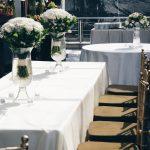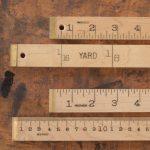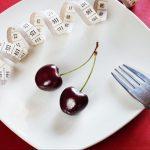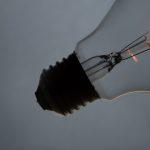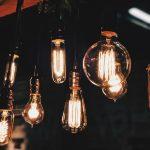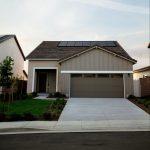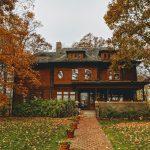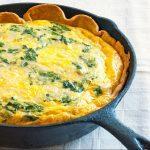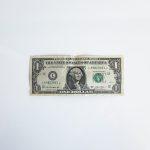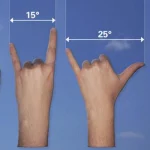Light Bulb Base Sizes : What size light bulb base do I need?
You know the size by looking at the Light bulb: Depending on the bulb, the numbers in a bulb code represent the size of the base, which is expressed in millimeters or eighths of an inch. The screw medium E26 base is one of the most used bulb base sizes in the US. Most incandescent, vintage, LED, CFL, and halogen light bulbs use it. The second most popular bulb base is the Candelabra E12 base.

What are the most common Light bulb base sizes?
The most popular diameters for light bulb bases are: Standard-Medium, using an normal screw in the base – E26 or E27. Candelabra with a smaller screw in the base: E12. Intermediate E17 Base. Bi-pin, an intermediate pin-in base with two points of contact named G4 or GU24. Finally Twist-And-Lock base of GU10
Get Lighting
Did you know there are different types of light bulb base sizes? A light bulb’s base determines how the bulb is designed. The light bulb base is a crucial part of the entire lighting system. There are different bases for different bulbs for different lighting fixtures. You must know the right size of the base for the type of light bulb you’re using so that you can choose the right base.
This article will explore light bulb sizing, explain the different types, and tell you which type is best for your home.
Looking for light shade sizes? check here
Related: Light bulb Size Chart: Types and Dimension guide
Light bulb base size chart
Knowing the proper light bulb base size before buying a replacement is essential. The measurements listed on the manufacturer’s chart will help you match your existing bulbs to new ones. It will also help you choose bulbs that work best in your room. Using a light bulb base chart will help you avoid making mistakes in the future. One of the most important basic tips for choosing the right one is to always be sure to read the chart carefully and measure the socket’s width.
Here is a quick light bulb base size chart sample for a couple of light bulb bases
| Base type | Diameter | |
| Screw Bases | MILLIMETERS | INCHES |
| Miniature Screw E10 | 10 | 0.4 |
| Miniature Candelabra E11 | 11 | 0.43 |
| Candelabra E12 | 12 | 0.47 |
European E14 | 14 | 0.55 |
| Intermediate E17 | 17 | 0.67 |
| Medium E26 | 26 | 1.0 |
| Bayonet Bases | ||
| Miniature Bayonet | 9 | 0.35 |
| Double Contact Bayonet BA15d | 15 | 0.60 |
| Single Contact Bayonet BA15s | 15 | 0.60 |
| D. C. Bayonet Medium BY22D | 22 | 0.87 |
| Index Double Contact Bayonet | 15 | 0.60 |
There are many types of light bulbs, including fluorescent and incandescent. Once again this is why it is always critical that you know the base size of the bulbs you want to purchase in order to ensure that they fit the light fixture. Here are the most common lamp base sizes. Edison light bulbs, for example, come in many different sizes. Those with a diameter of over five inches should go with a type of E14 or E27 base.
Next, you should know the base size of the fixtures where you want to use the bulbs. You can easily identify them by their screw feet and the length of their screw-in bases. You can also check the holder to determine the proper size of the socket. If you need an E26 base for your luminaire, for example, you should select the bulb that fits it. If you are not sure, try buying an E27-based bulb. It will fit the luminaire perfectly. The light bulb shape is also a huge consideration.
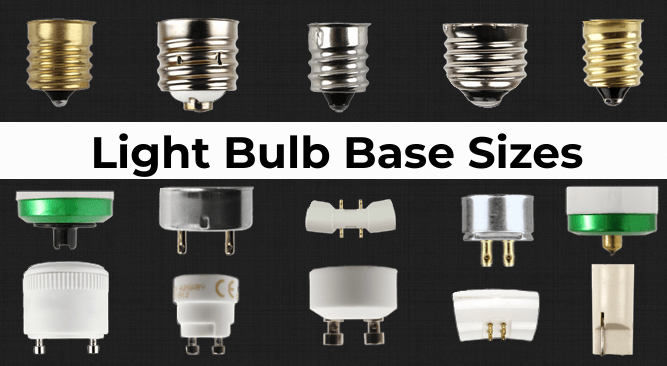
How Do I Know What Light Bulb Base Sizes is Good For Me?
One of the most common questions asked by customers is, “How do I know what light bulb base size is right for my home?”. To find out what is the best choice for your home, you need to understand the different bulb bases. They have several technical names, which you can find below. Once you know which one you have, you can start looking for a replacement. Other factors worth considering for a common size range are bulb shape, colour temperature, socket sizes, light fittings, base diameter, energy efficiency, active spaces, fuse holder, connector sizes, etc.
Here are the most common types of light bulb bases;
Light Bulb Screw base sizes
In the US, screw base bulbs are very common and therefore the most common type of bulb base is the screw base, also known as the Edison base. Further, there are quite a number of different types of screw bases. They include E26/E27, E12 Candelabra, E14 European, E17 Intermediate, and E39/E40 Mogul.
Candelabra bulbs are typically used in decorative light (decorative bulb) and nightlight bulbs. The E17 is commonly used in desk lamps, appliance light bulbs (appliance bulbs) while E39, is used on street lights and high-wattage lamps. In Europe, these bulbs come in the E14 or E17 size and are mostly used in refrigerators and night lights. The screw sockets must always be the right size and of course, international standards apply.
Bayonet base
A bayonet base gets its name from the twist-and-push action used to mount bayonets on rifles. A bayonet light bulb has a pin on either side that locks into the socket when twisted. Bayonet type bulbs are known as B22 or B15, and may have one or two contact points for electrical connection. Bayonet bulb bases are used in both home and commercial lighting for effective lighting efficiency.
These are most common in Australia and other parts of the former British Empire. They are also known as BC, BC2, or BC2. The base size of a bayonet light bulb is B22d-2, although some older installations use a different base type. To install a bayonet light bulb, simply insert the bulb in the light socket and turn it clockwise until it is firmly in place.
A bayonet light bulb base is less common in the US but is used widely throughout Europe and Asia. They are a relatively simple type of light bulb base. Incandescent bulbs typically have bayonet bases, while CFLs typically use GU10. These are not interchangeable but can be very useful in many circumstances
Wedge base
The Wedge light bulb base is a common lighting fixture type. Its wires are similar to bi-pin connectors, but instead of running up the side of the socket, the wires are folded onto the sides of the base. This allows the user to insert the bulb with ease. The wires usually extend out of the bulb and are inserted into a plastic base that is narrower at the tip than the bulb itself. Some bulbs may not have a plastic plug, and the wires can be twisted and plugged into the socket.
The Wedge light bulb base has two different styles. The first is the bi-pin light socket, which lets the bulb be inserted without turning it. The other is the true wedge, which uses compression and friction to hold the bulb in place. The spring-loaded electrical contacts grip the protrusions on the base and prevent it from loosening during vibration. The Wedge light bulb base can also be inserted into a slide-base lamp, specialty lamps, or table lamp, although it will not fit into the Edison screw-style socket.
The Wedge light bulb base is commonly used in automotive lighting applications, where it is used to retrofit incandescents. This type of bulb uses a large wedge-like base and is designated as a bi-pin or quad-pin. These bulbs are typically very bright, but some have a low output and may not be suited for your application. Be sure to use bayonet sockets.
Bi-pin base
G4 bi-pin light bulb bases come in two different sizes, and they are a relatively common option for modern lighting. They are usually designated by a capital letter G and a number after the number. The letter G represents the plugin lamp, and the numbers after it indicate the distance between the pins’ centers. In recent years, many technological advances have been made to this type of base, which is also used for LED bulbs.
E26 and E27 light bulb bases have the same number of pins, which makes them compatible for both types of light fixtures. The difference between these two base sizes is only one millimeter, making them interchangeable. Most light fixtures use either of these bases, and they are the most common for general lighting in standard light fixtures. These bulbs also come in many different styles and colors. They are also available in a variety of styles.
The E39 bulb base is more rare. It is commonly used for general lighting, vanity lights, and outdoor spotlights. It is also known as the large base and is often used with older, high-pressure sodium and metal halide bulbs. An E39 bulb is 39 mm in diameter and has three pins, while a standard E26 bulb is 26 mm in diameter. An E39 bulb can be either a single- or double-pin type. Use bipin socket.
Choosing the right base type
Choosing the right base type is crucial if you want to install the bulb in a specific fixture. It’s easy to confuse the different types of bases – they can look similar to each other, but aren’t. It’s also important to learn about the technical name of each type, such as bayonet, wedge, and bi-pin. You can find a bulb base that matches the fixture, but if you’re unsure, ask a lighting professional for assistance. Common lighting fixtures include decorative lighting, garden lighting, commercial string lights, bicycle lights, hood lights, refrigerator lights, microwave lights, ornamental lights, marquee lights, decorative string lights, beautiful spotlights, etc.
How to Measure Your Light Bulb Base Sizes
If you’re unsure how to measure a light bulb base size (base bulb sizes), it’s easy enough to learn by reading the packaging. A light bulb’s base size (base light bulbs size) is usually listed next to its style or shape. The diameter is the most basic way to determine the base in millimeters. Often, these parameters are written in letters or numbers. The width indicates the length. To convert this measurement to a numerical shape, divide the width by eight.
The basic measurement of a light bulb base is its diameter in millimeters. Unless the manufacturer specifies otherwise, the dimensions including light bulb size are listed in eighths of an inch. The largest light bulb base is the E26, which stands for “Edison screw-in” and measures 26 millimeters in diameter. The number-letter combination identifies the type of bulb.
The E-10 light bulb base is also called a Miniature Edison Screw. It is the smallest type of bulb base, with a diameter of ten millimeters. Despite its smaller diameter, the bulb can fit into the same socket, as long as it is sized properly. This guide will help you find the right light bulbs for your needs.
Types of Light Bulbs
There are quite a number of light bulb types, including the following common ones;
Light Emitting Diode (LED) bulbs
The LED bulb is considered one of the most energy-efficient light bulbs. They don’t contain any mercury, emit no heat, and give very bright light.One of the benefits of LED light bulbs is that they are environmentally-friendly. According to a recent study, LEDs can save $7,500 in a five-year period. This means that you’ll be able to recoup your investment in two years. And the best part is that LED bulbs are relatively cheap compared to other types of bulbs. They also last longer than most bulbs, so they will cost you fewer pennies per year.
They are a great choice for homes with small electrical bills because it saves money in the long run. And it’s better than any other type of light bulb if it lasts for several years.
Halogen light bulbs
Halogen light bulbs are the most energy-efficient and environmentally friendly type of light bulb. The tungsten filament is placed inside a halogen mixture inside a compact envelope. The halogen may be iodine or bromine. This gas creates heat and emits light. The heat is converted into energy that is useful for many household and business purposes. The bulb’s long lifespan is a benefit for home and office owners.
The difference between a halogen bulb and a LED is the way in which they generate light. A standard incandescent bulb uses electroluminescence to produce light. This energy is transferred from the lamp wiring into the base of the bulb, where the filament is usually tungsten. The electricity then passes back through the base of the bulb, producing light. It is important to note that this process also creates heat, which makes it less efficient for some applications.
Halogen light bulbs can be recycled but there are many drawbacks. The most obvious is that they are extremely dangerous. The material inside of a halogen bulb is incredibly toxic to the environment, so it is imperative to recycle them properly. Even if you don’t want to recycle your old halogen bulb, there are a number of manufacturers that offer a recycling service.
Compact Fluorescent light bulbs (CFL)
The use of compact fluorescent light bulbs (CFLs) in home lighting is a great way to conserve energy, a great choice for energy-conscious homeowners. Since their introduction, the industry has grown substantially. The technology behind compact fluorescents has been developed and refined over the past several years. Many inventors have gotten their start on this new technology. These people have helped make these light bulbs a reality in today’s marketplace.
One study published by the Maine Department of Environmental Protection reveals that compact fluorescent lights and bulbs are more efficient than conventional light bulbs. This study found that CFLs last a third as long as traditional light bulbs.
Compact fluorescent light bulbs use 75 percent less energy than traditional incandescent bulbs. They can help you save money on your electricity bill and prevent emissions that contribute to global climate change. Unlike traditional bulbs, which contain visible mercury, CFLs don’t release the mercury vapors when they are broken. However, if you do manage to break one of these light bulbs, you should follow the instructions provided by the manufacturer to prevent the release of mercury vapor.
Incandescent light bulbs
Incandescent light bulbs are a common lighting fixture. These types of light have many advantages. They are inexpensive to produce and are compatible with both AC and DC current. The main benefit of incandescent bulbs is that they can be dimmed. To learn more about incandescent light bulbs, keep reading. In 1879, Thomas Edison demonstrated the use of an incandescent bulb to the public. The filament of the bulb is heated until it becomes incandescent. This is the process that produces light.
The filament of an incandescent bulb contains a tungsten filament. The wires are connected to two contact points (contact wires/contact lugs) on the bulb, and an electrical current flows through it. The filament is connected to two wires on the base of the bulb, and these wires are connected to a conductor. The glass mount and stem help smooth out the flow of the electric current, thereby producing visible light. The glass bulbs are often used in older homes, but can still be found in many newer buildings and businesses.
Modern incandescent bulbs use significantly less electricity than their predecessors. The standard 100-watt incandescent bulb produces approximately 1600 lumens of light, making them more energy efficient. In addition, newer types of incandescent light bulbs use significantly less power while producing the same brightness. The wattage of the old bulbs will gradually be replaced by new energy-saving options. You can choose from LED, compact fluorescent lamps, and updated versions of incandescent light bulbs that use halogen gas to slow down the deterioration of the tungsten filament.
More light bulb options and variations
Other options you might want to consider for a perfect bulb include floodlight bulbs, tubular bulbs, smart bulbs, B10 small globe-shaped bulbs, standard household bulb, T22 candle-flame-shaped bulbs, A15 small tube-shaped bulbs, voltage bulbs, A-19 bulb, A21 globe-shaped bulbs, B-shaped bulbs, 25W bulb, 40W bulb, E-10 Base light bulbs, pear bulb, etc. In terms of measurements, common ones include 12-Mm diameter bulbs, 14-Mm diameter bulbs, etc.
Light Bulb Base Sizes Explained (video)
Conclusion
Light bulbs are an essential part of our homes and offices. They provide us with the light we need to see and work. Apart from that, they can also be aesthetically pleasing, adding a touch of style and charm to our surroundings. Before you buy a light bulb, determine its base type. The main types of bases include screw, bayonet, wedge, and pin. Each type has different working modes.
Got any questions? Please feel welcome to ask in the comments section.
Picture in this article by Robert Wiedemann on Unsplash
Related House Size Charts
- Barbie Doll Size : What are different sizes of Barbie ?
- Blanket sizes chart : blanket sizes and dimensions in inches & cm
- Tablecloth size chart – What are standard tablecloth sizes ?
- How Many Meters Are In A Yard?
- How Many Centimeters are 8 Inches?
- Knife Sizes and Different Types
- 4 Inches is How Many Centimeters?
- Light Bulb Base Sizes : What size light bulb base do I need?
- Tesalate Towel Size Guide
- Light bulb Size : What are the different and standard bulb sizes?
- Duvet Sizes: What is a Standard-Size Duvet?
- Single Car Garage Size and Dimensions
- How High Is A Story?
- How Much Does 1 Cup Of Rice Weigh?
- Cast Iron Skillet Sizes: What Size Do I Need?
- Dollar Bills Size Chart
- Pizza Sizes: Which One to Order?
- How To Measure A Foot Without A Ruler
- Wine Glass Size Chart



